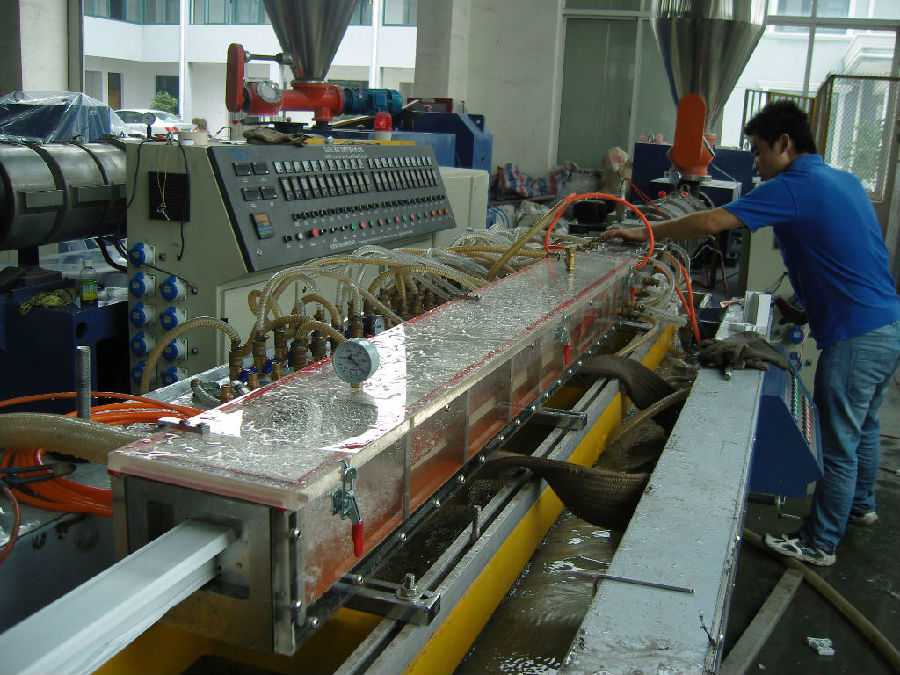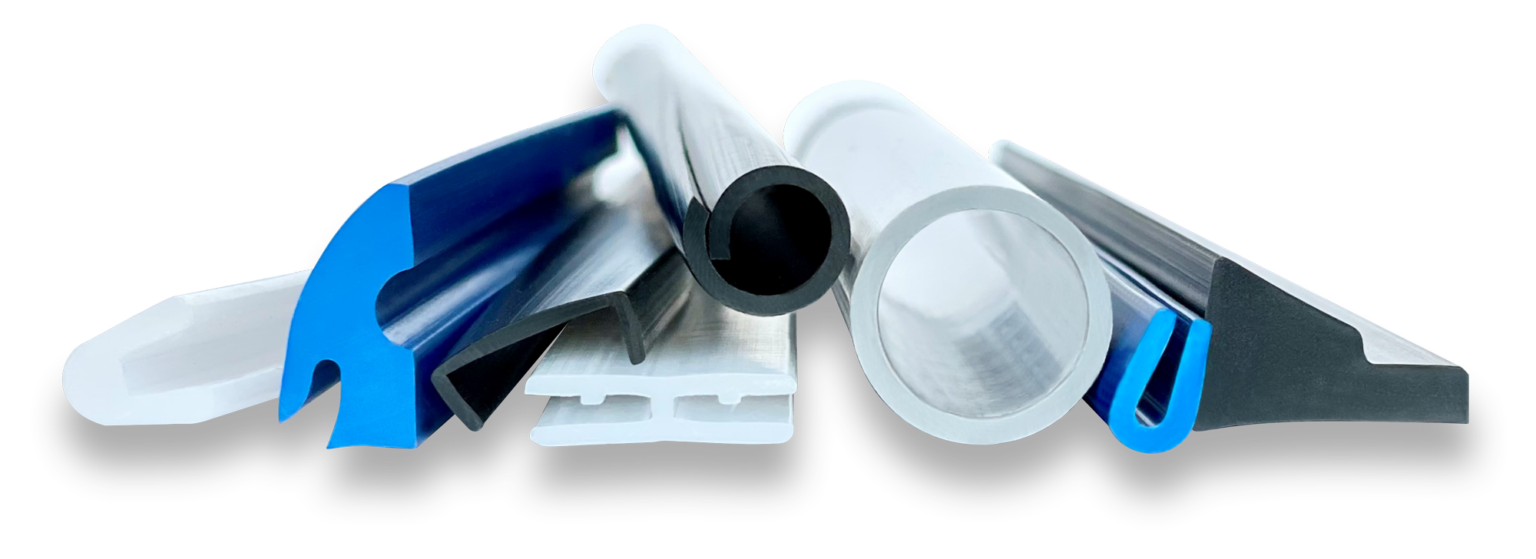Plastic extrusion for high-strength, long-lasting materials
Plastic extrusion for high-strength, long-lasting materials
Blog Article
A Comprehensive Overview to the Process and Benefits of Plastic Extrusion
In the vast world of manufacturing, plastic extrusion arises as a important and very effective procedure. Translating raw plastic into continuous accounts, it accommodates a variety of markets with its exceptional convenience. This guide intends to elucidate the elaborate actions entailed in this method, the kinds of plastic proper for extrusion, and the game-changing benefits it brings to the sector. The occurring conversation promises to unravel the real-world impacts of this transformative process.
Recognizing the Basics of Plastic Extrusion
While it may show up complex in the beginning glimpse, the procedure of plastic extrusion is essentially simple - plastic extrusion. It is a high-volume production strategy in which raw plastic is melted and formed into a continuous account. The process starts with the feeding of plastic material, in the form of pellets, powders, or granules, into a warmed barrel. The plastic is after that melted utilizing a combination of warmth and shear, applied by a turning screw. Once the molten plastic reaches the end of the barrel, it is forced through a tiny opening known as a die, shaping it right into a wanted form. The designed plastic is then cooled, solidified, and reduced right into preferred sizes, finishing the process.
The Technical Process of Plastic Extrusion Explained

Sorts Of Plastic Suitable for Extrusion
The option of the appropriate kind of plastic is a crucial element of the extrusion procedure. Numerous plastics offer special buildings, making them more suited to specific applications. Polyethylene, for instance, is generally used because of its affordable and easy formability. It uses superb resistance to chemicals and moisture, making it perfect for products like tubing and containers. Polypropylene is one more prominent selection due to its high melting point and resistance to fatigue. For even more durable applications, polystyrene and PVC (polyvinyl chloride) are commonly picked for their stamina and toughness. These are usual options, the selection inevitably depends on the particular demands of the product being generated. Comprehending these plastic types can significantly improve the extrusion procedure.
Contrasting Plastic Extrusion to Various Other Plastic Forming Techniques
Understanding the kinds of plastic appropriate for extrusion leads the way for a wider conversation on just how plastic extrusion piles up versus various other plastic creating methods. These consist of injection molding, impact molding, and thermoforming. Each approach has its special uses and benefits. Injection molding, as an example, is outstanding for creating intricate components, while blow molding is best for hollow things like containers. Thermoforming have a peek at this site excels at creating large or shallow components. Plastic extrusion is unrivaled when it comes to developing continual profiles, such as gaskets, pipelines, and seals. It also enables for a constant cross-section along the size of the item. Thus, the choice of technique greatly depends on the end-product demands and specs.
Key Advantages of Plastic Extrusion in Manufacturing
In the realm of manufacturing, plastic extrusion offers many significant benefits. One notable advantage is the cost-effectiveness of the process, which makes it a financially enticing manufacturing approach. In addition, this method supplies exceptional product flexibility and enhanced manufacturing rate, thus enhancing overall production performance.
Cost-efficient Production Approach
Plastic extrusion leaps to the forefront as an affordable manufacturing technique in manufacturing. This procedure stands out for its try these out capacity to produce high quantities of product quickly and successfully, offering suppliers with considerable savings. The main price advantage is the capacity to use less pricey basic materials. Extrusion uses thermoplastic materials, which are much less costly contrasted to porcelains or steels. Even more, the extrusion procedure itself is fairly basic, lowering labor expenses. In addition, plastic extrusion requires much less power than traditional manufacturing approaches, adding to lower operational expenses. The procedure also reduces waste, as any type of excess or malfunctioning materials can be reused and recycled, giving another layer of cost-effectiveness. In general, the monetary advantages make plastic extrusion a very attractive option in the production sector.

Superior Item Flexibility
Past the cost-effectiveness of plastic extrusion, another considerable benefit in manufacturing lies in its exceptional item flexibility. This makes plastic extrusion an excellent service for sectors that call for customized plastic elements, such as vehicle, construction, and packaging. In essence, plastic extrusion's item adaptability fosters development while improving functional performance.
Enhanced Production Speed
A significant advantage of plastic extrusion lies in its enhanced manufacturing speed. Few various other production processes can match the rate of plastic extrusion. Furthermore, the ability to keep constant high-speed production without giving up product quality establishes plastic extrusion look at here apart from other approaches.
Real-world Applications and Effects of Plastic Extrusion
In the realm of production, the method of plastic extrusion holds extensive relevance. This process is extensively utilized in the manufacturing of a range of products, such as plastic tubes, window structures, and weather condition stripping. As an outcome, it substantially influences markets like building, product packaging, and vehicle industries. Its influence expands to everyday things, from plastic bags to toothbrushes and non reusable flatware. The economic advantage of plastic extrusion, largely its cost-efficient and high-volume outcome, has actually transformed production. However, the environmental effect of plastic waste continues to be an issue. Consequently, the industry is persistently aiming for innovations in recyclable and naturally degradable products, indicating a future where the benefits of plastic extrusion can be kept without jeopardizing ecological sustainability.
Verdict
To conclude, plastic extrusion is a extremely effective and reliable approach of changing resources right into varied items. It supplies countless benefits over other plastic forming methods, consisting of cost-effectiveness, high outcome, very little waste, and design adaptability. Its influence is exceptionally felt in numerous markets such as building, automotive, and durable goods, making it a pivotal procedure in today's manufacturing landscape.
Delving much deeper into the technical procedure of plastic extrusion, it begins with the option of the proper plastic material. As soon as cooled down, the plastic is cut right into the needed lengths or injury onto reels if the product is a plastic movie or sheet - plastic extrusion. Comparing Plastic Extrusion to Other Plastic Forming Methods
Comprehending the types of plastic ideal for extrusion leads the method for a broader discussion on just how plastic extrusion stacks up against other plastic creating techniques. Couple of other production processes can match the rate of plastic extrusion.
Report this page